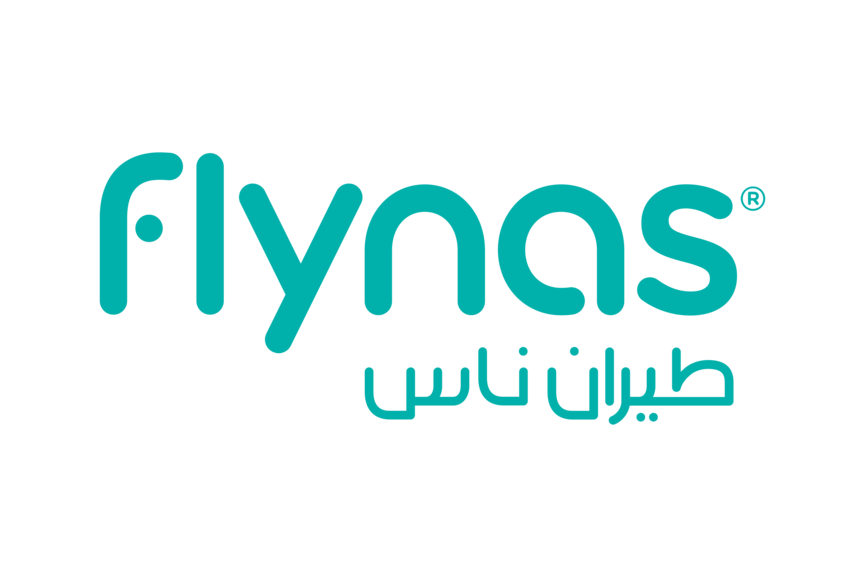The Northern Explorer
Location : Saudi Arabia - Haqil
A tailor made program, that designed to cover the Northern Part of Saudi for a study tour.
With this itinerary, we do a big circle to find out what is the most suitable sites for our clients in the future, that is why we do a lot of driving.
Highlights: Haqil, Zeita Desert, Tabuk, Al Jowf, Jubbah, Hail, Mahajah, Khaybar, White Mountain, AlUla, Jibal Rukkab, Hegra, Buraykah, Desi Valley, Al Shaq, Bajdah, Jabal Al Lawz, Ras Al Sheikh Hameed, Magna, Tayib Ism, Medyan
Program ( 12 days )
-
Day 1
Haqil Border – Zeita Desert - Tabuk
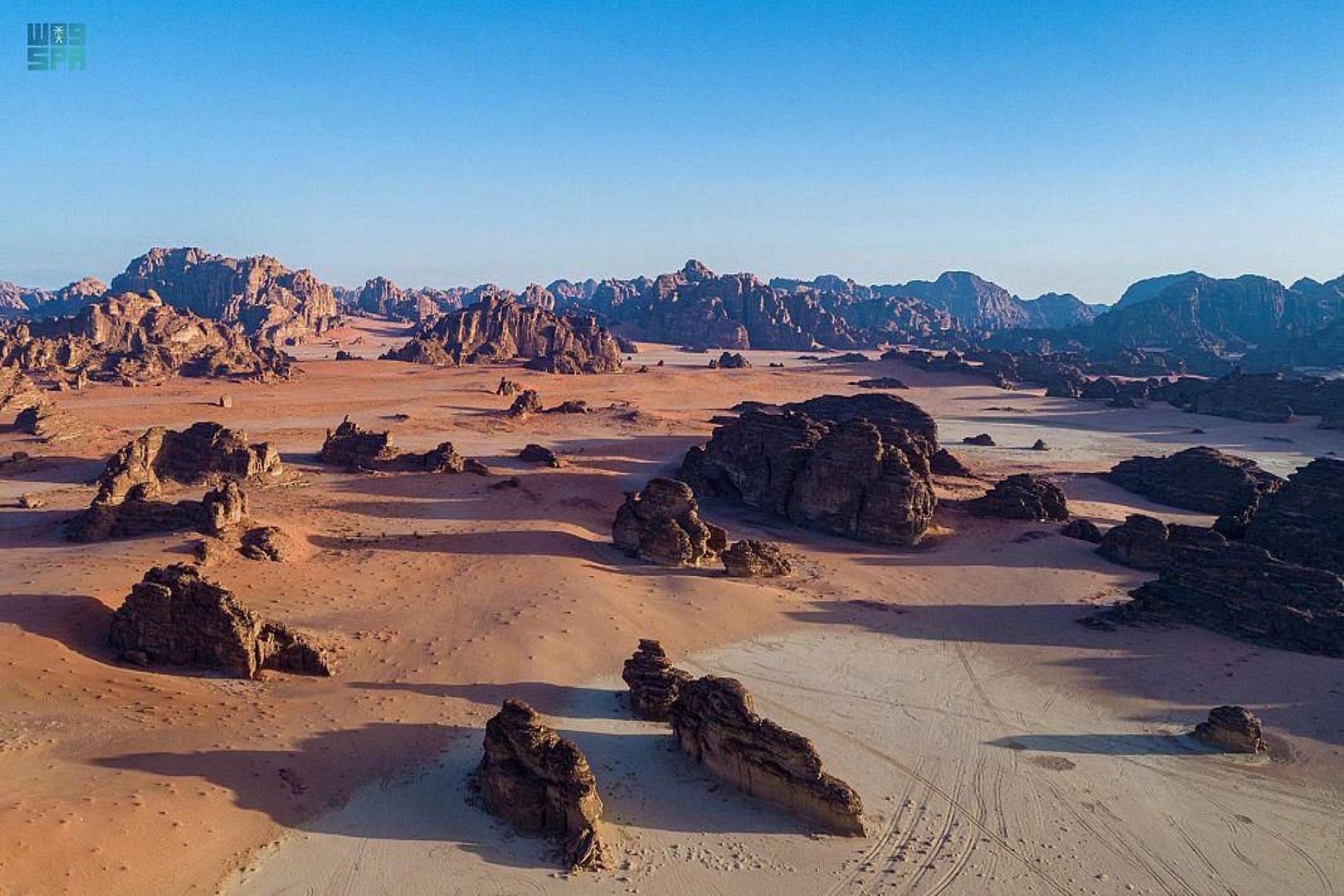 Meet at Haqil Border, drive to Zeita Desert and enjoy the Rosy Mountains on our way to Tabuk City.
Meet at Haqil Border, drive to Zeita Desert and enjoy the Rosy Mountains on our way to Tabuk City.
Zeita Desert is a massive sand dune and is part of Jibal Hisma.
Overnight in Tabuk hotel.
-
Day 2
Tabuk – Al Jawf
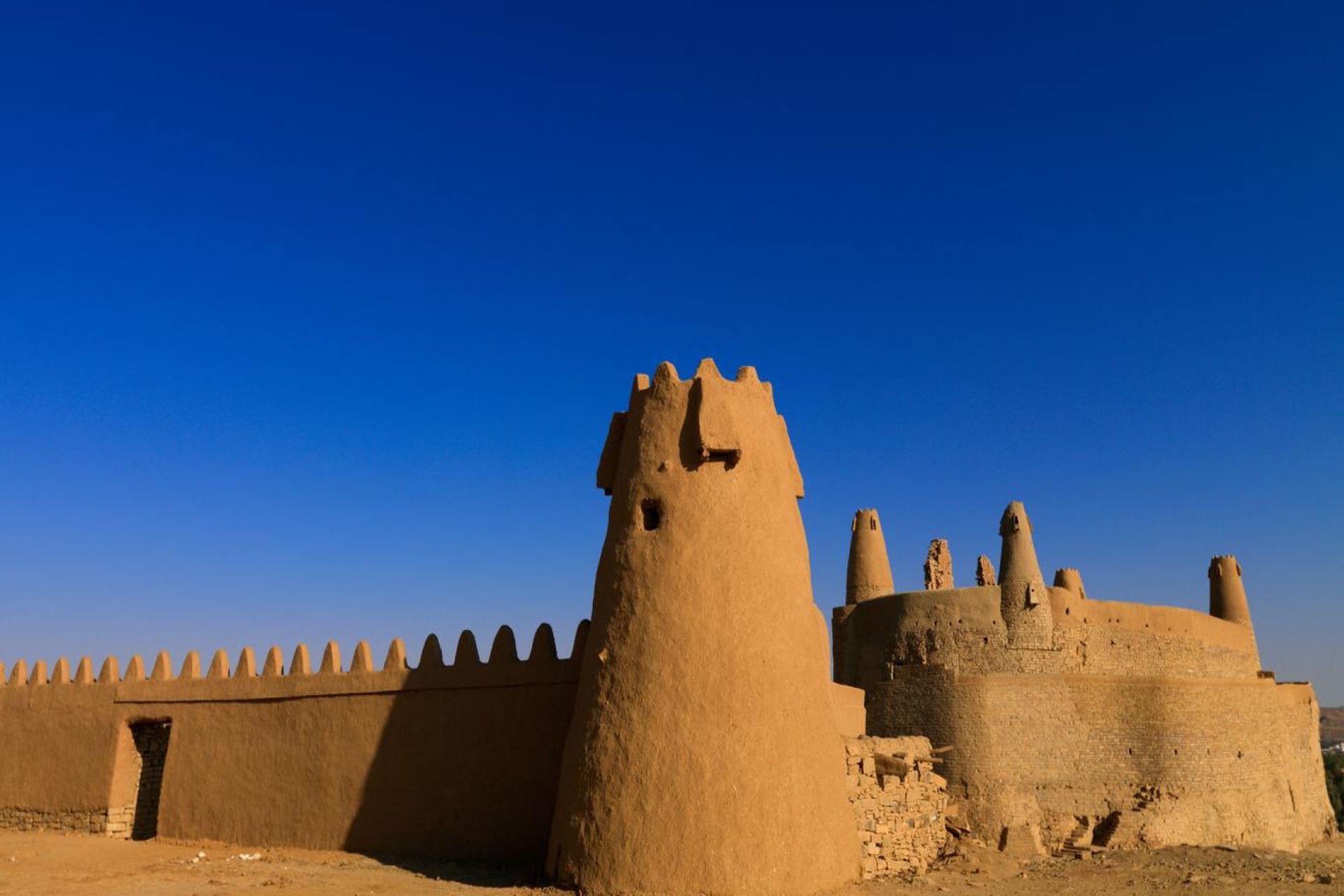 Early morning, we drive to the oasis of Dumat Al-Jandal, it is the largest and best-known oasis at the northern limit of the great al-Nafud desert. Visit of Qasr Marid, which means “the rebel” in Arabic, stands on a natural limestone outcrop overlooking the valley where the ancient oasis lies.
Early morning, we drive to the oasis of Dumat Al-Jandal, it is the largest and best-known oasis at the northern limit of the great al-Nafud desert. Visit of Qasr Marid, which means “the rebel” in Arabic, stands on a natural limestone outcrop overlooking the valley where the ancient oasis lies.
Umar bin al-Khattab Mosque, is certainly the most emblematic monument in the Al Jawf province, Pyramidal in shape, the minaret has five stones rising to a height of about 15 meters.
Rajajil is a mysterious ancient site located on a sandstone terrace, the ‘enigma’ of the standing stones of the site attracted popular explanations, including stories of fear and superstition, or the understanding that the site had astronomical functions.
Overnight in Al Jawf hotel.
-
Day 3
Al Jawf – Jubbah - Hail
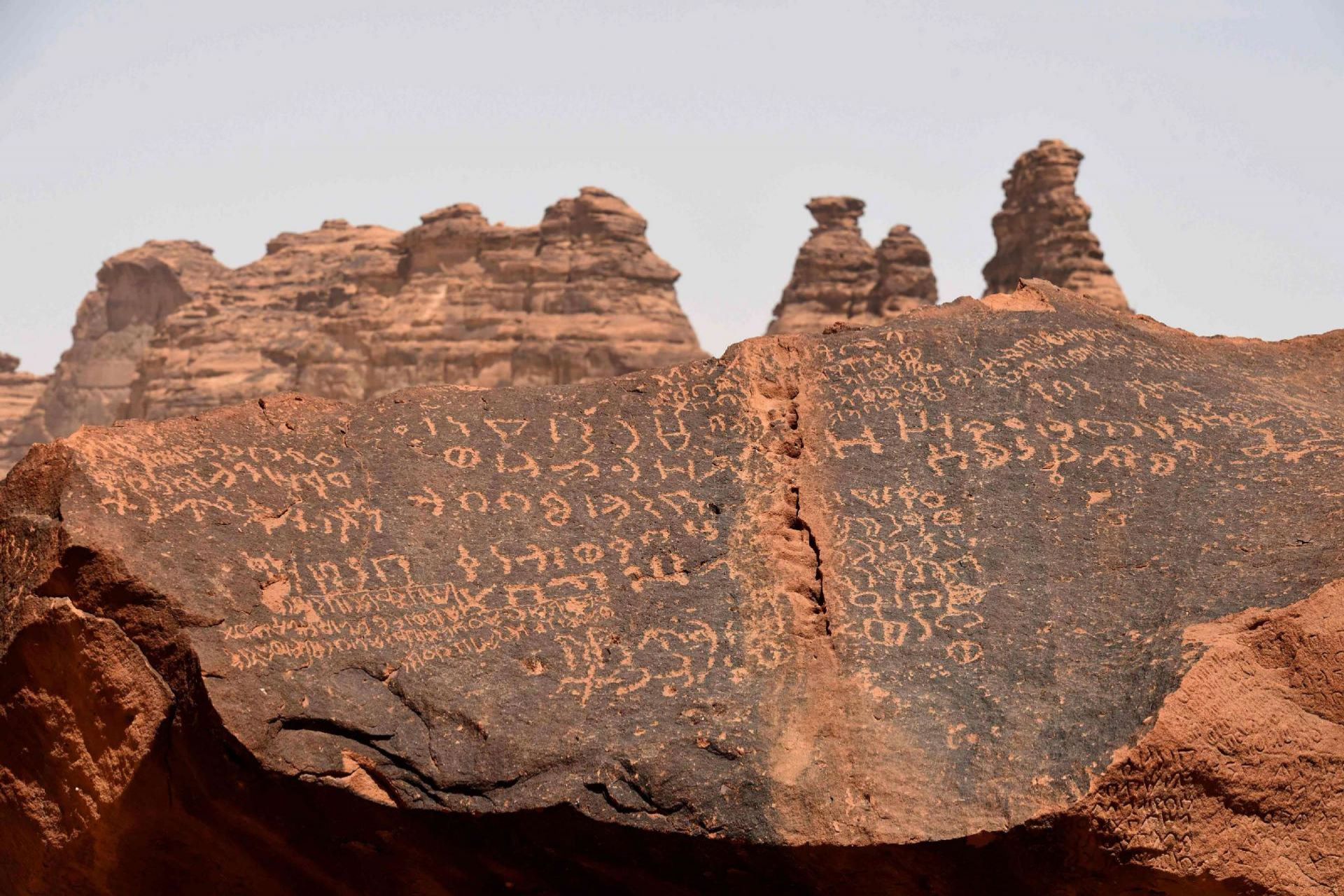 After breakfast we head to Jubbah, the most famous rock art site in Saudi Arabia, which is designated a UNESCO World Heritage Site. The carvings that can be found on the Jibal Umm Sinman cover a wide range of representations as well as a large period of time with some carvings possibly being 10 000 years old.
After breakfast we head to Jubbah, the most famous rock art site in Saudi Arabia, which is designated a UNESCO World Heritage Site. The carvings that can be found on the Jibal Umm Sinman cover a wide range of representations as well as a large period of time with some carvings possibly being 10 000 years old.
Jubbah is host of the two most emblematic carvings in Saudi Arabia.
The first one is a character dominating another smaller one.
The second one is a chariot pulled by two horses.
Continue to Hail, which has been the gateway to the desert.
From the city you can see the Aarif citadel on a mountain.
Overnight in Hail hotel.
-
Day 4
Hail – Mahajah - Khaybar
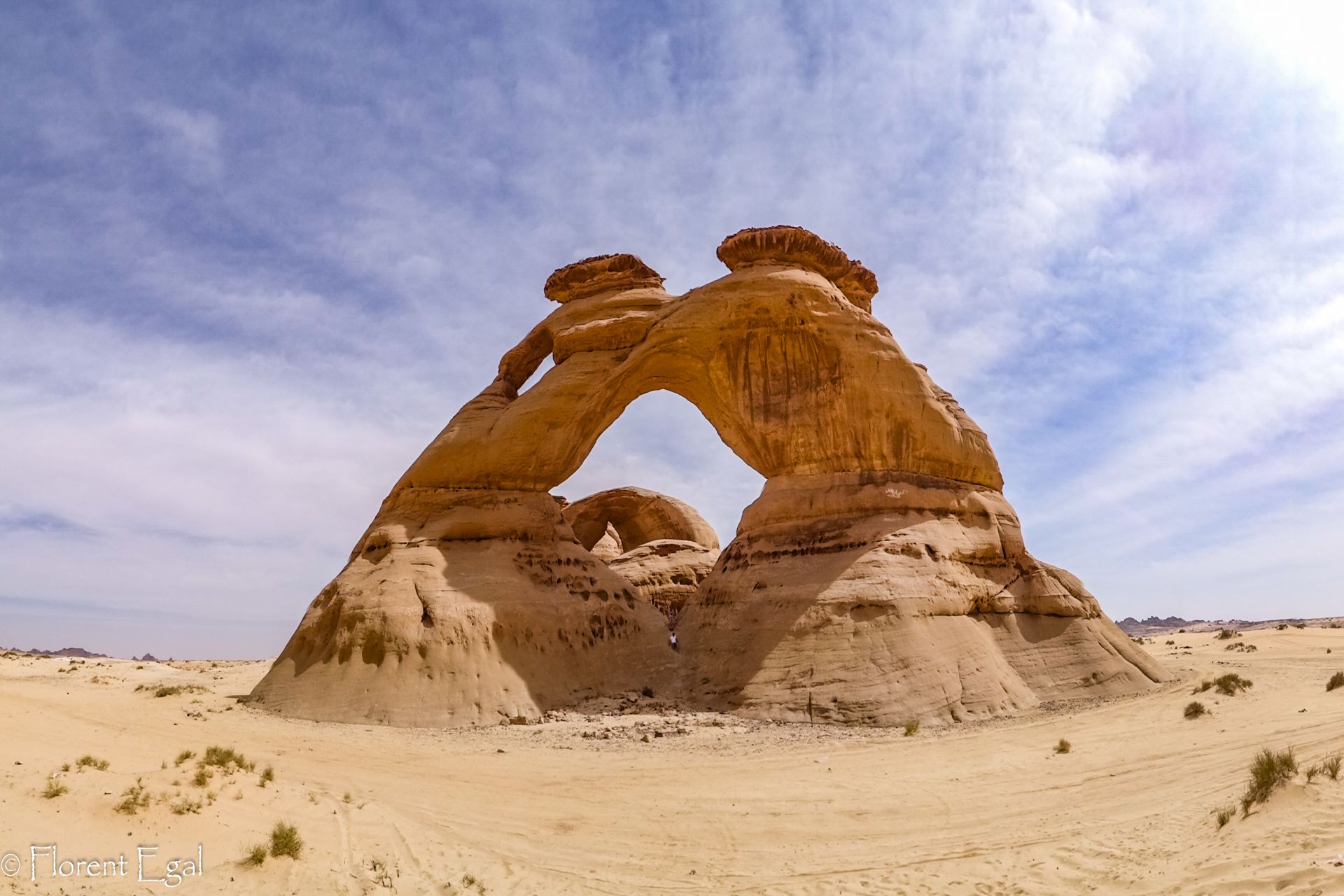 Drive to the hidden treasures of Tabuk Province and the land of natural arches Mahajah, is a rocky desert where erosions of sandstone formations created out-of-this-world landscapes. It lays southwest of the large sand dune desert, the Nefud Al-Kebir, an ancient area known for having hosted early humans for several millennia, leading to the rich rock art found in Mahajah. It also hosts the one of most spectacular arches, especially around Jebel 'Uwayqir. There, the erosion from wind and rain sculpted a sandstone formation into three arches, the tallest reaching as high as 40 meters.
Drive to the hidden treasures of Tabuk Province and the land of natural arches Mahajah, is a rocky desert where erosions of sandstone formations created out-of-this-world landscapes. It lays southwest of the large sand dune desert, the Nefud Al-Kebir, an ancient area known for having hosted early humans for several millennia, leading to the rich rock art found in Mahajah. It also hosts the one of most spectacular arches, especially around Jebel 'Uwayqir. There, the erosion from wind and rain sculpted a sandstone formation into three arches, the tallest reaching as high as 40 meters.
Continue to Tayma the oldest human settlements in the Kingdom of Saudi Arabia, and even the whole Arabian Peninsula. In 2016 the Saudi Commission for Tourism and National Heritage (SCTNH) announced that a joint research team comprising Saudi archaeologists and experts from Oxford University discovered the oldest human bone during an excavation at Tayma. The bone found is the middle part of the middle finger of a human being who lived 90,000 years ago.
Visit of Tayma Museum, Haddaj Well, Governor's Palace & Al-Hamra Palace.
Overnight in AlUla Camp.
-
Day 5
Khaybar
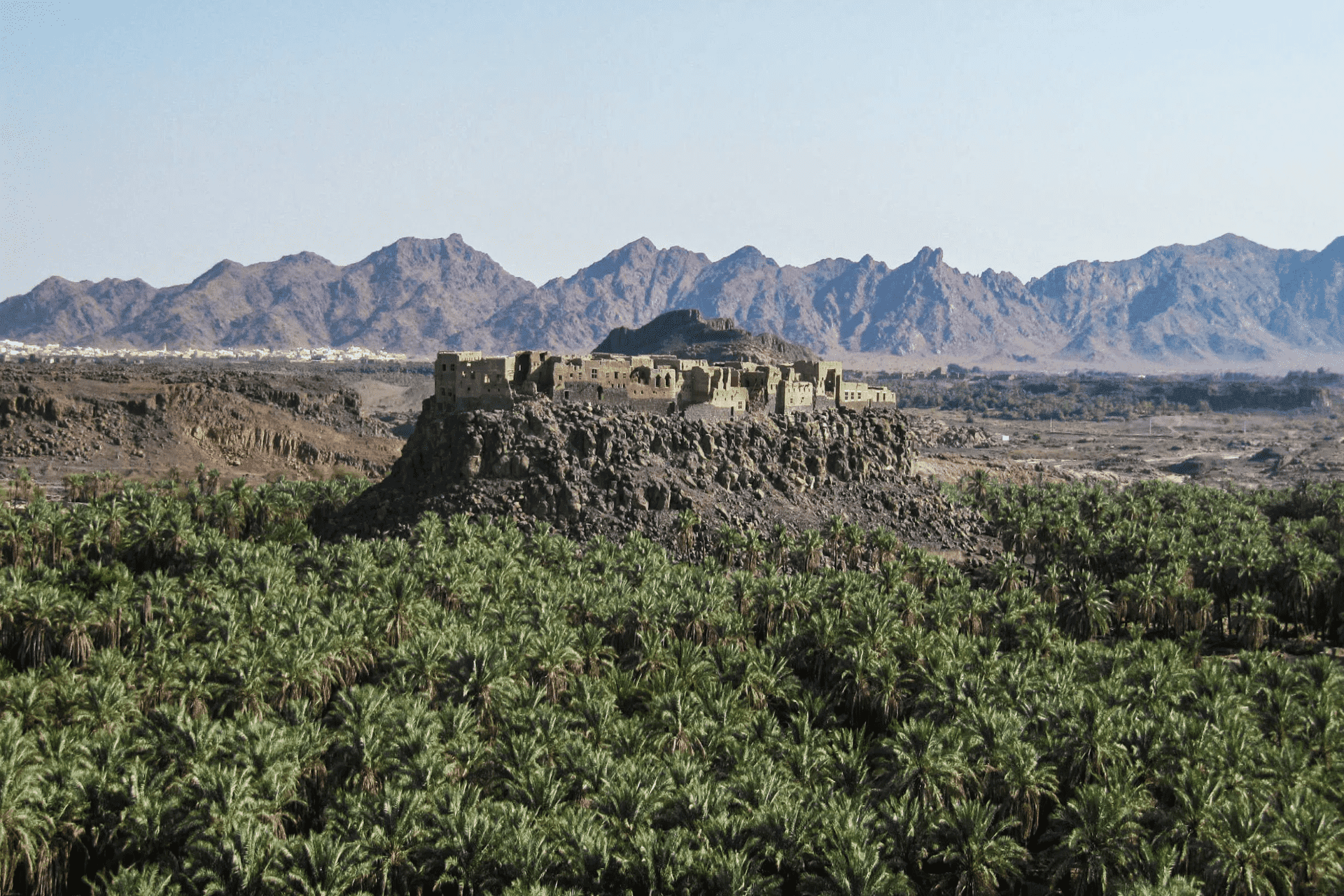 The last great ancient oasis of Khaybar, Khaybar is surrounded by the lava fields called "harrat", the largest one, the Harrat Khaybar, is called after its name.
The last great ancient oasis of Khaybar, Khaybar is surrounded by the lava fields called "harrat", the largest one, the Harrat Khaybar, is called after its name.
Until today Khaybar benefits from permanent water points that surface at the lowest parts of the oasis and a lush vegetation can grow naturally there. From the numerous wells a complex system of irrigation canals is still used today to water the palm trees and offer a unique sight on how an Arabian oasis could’ve looked two thousand years ago.
Khaybar appears under the name of Hibra and became famous as the last Jewish stronghold, here is what Tabari wrote about; “Khaybar was in the possession of Jews; it is the most solid of their fortress. It was composed of seven forts of different sizes, surrounded by plantations of palm trees”.
The old village of Khaybar is made of ruins of abandoned buildings whose base (probably more ancient) is built with stones and the upper part is made of mud-bricks.
Located 10 Km to the east with accessible path to; Um Jirsan Cave (Jebel Qidr) at Harrat Khaybar. 1,481m long, passages to 45m wide, with gypsum and calcite formations, many bones remain.
Overnight in Khaybar hotel.
-
Day 6
White Mountain
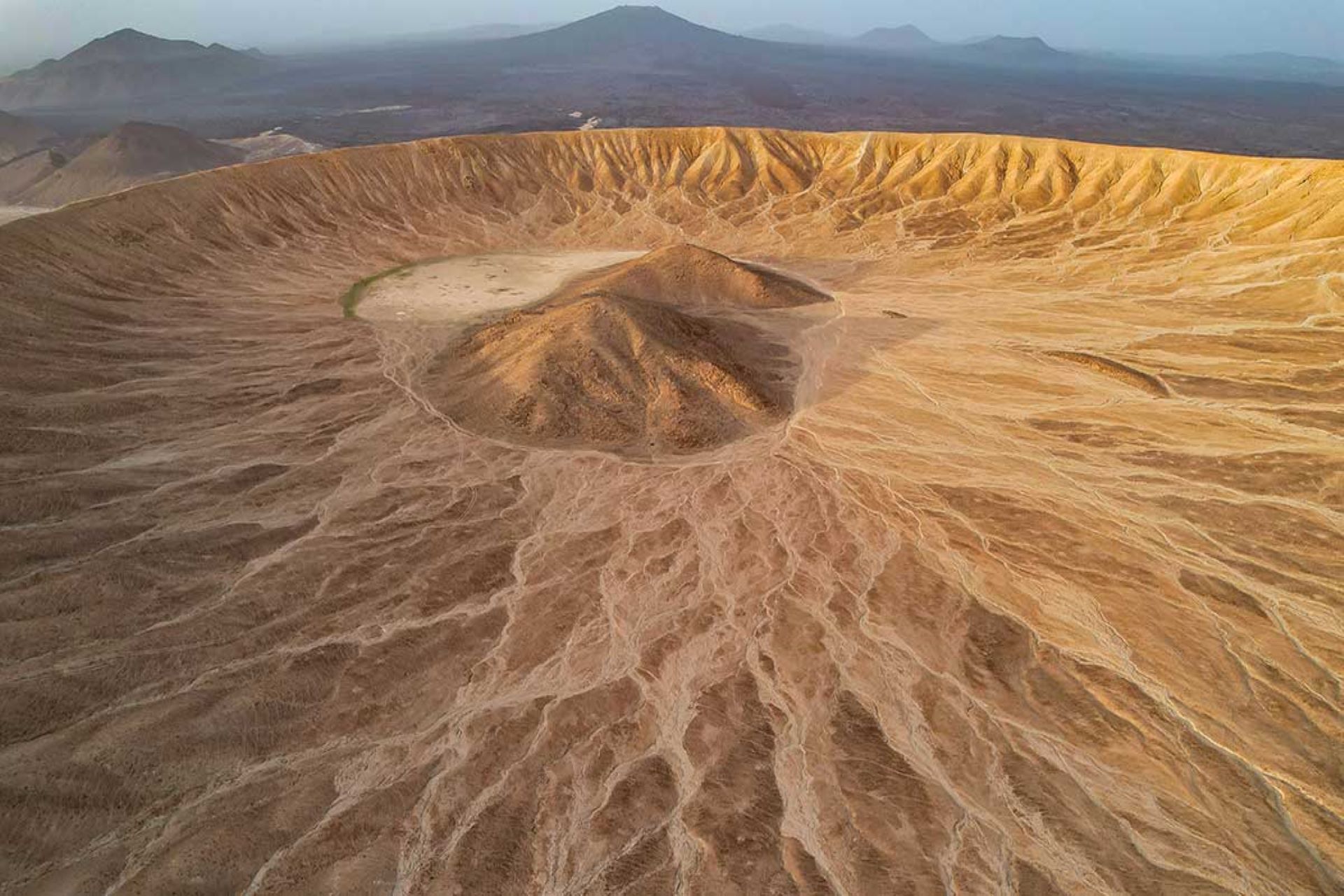 the jewel of the Harrat Khaybar is to be found in its center where lay a very rare kind of volcanoes made of silica-rich called Comendite which give them a whitish color. The two largest are the Jebel Abiadh and the Jebel Bayda.
the jewel of the Harrat Khaybar is to be found in its center where lay a very rare kind of volcanoes made of silica-rich called Comendite which give them a whitish color. The two largest are the Jebel Abiadh and the Jebel Bayda.
White mount is the highest crater of the harra with 2093 meters of altitude and the Jebel Bayda (in Arabic the feminine of “white mount”) is the largest with 1,5 kilometers of diameter.
The contrast is most striking where the whitish creamy lava of the Jebel Bayda meets the deep dark one of the Jebel Qidr. A track leads to the edge of both lava flows where it is possible to stand on this volcanic border having one foot on each type of lava.
Camping overnight at white mountain.
-
Day 7
White Mountain – AlUla
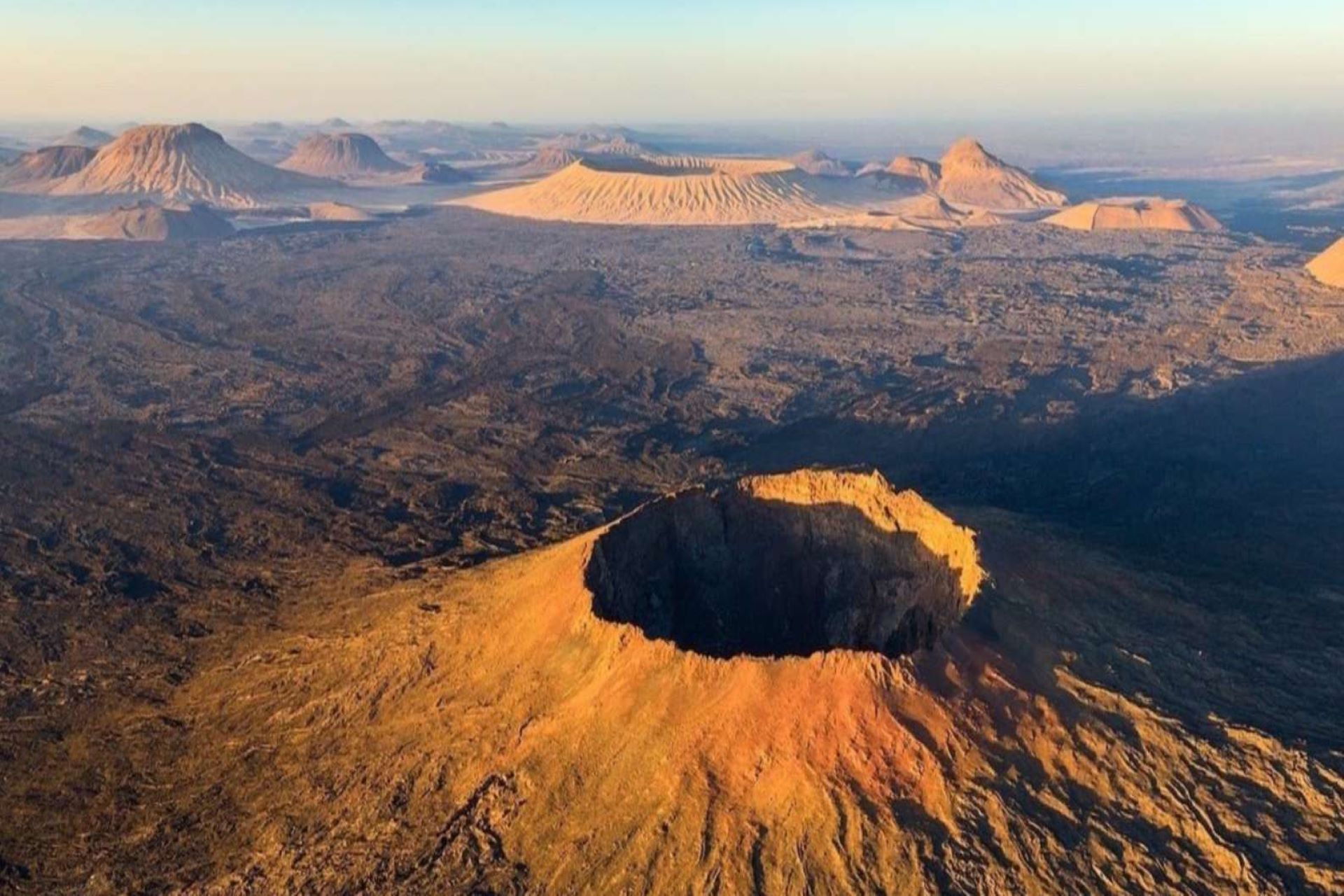 Full day excursion around white mountain
Full day excursion around white mountain
It is possible to reach safely some of the craters by foot in order to witness the most of the out-of-this-world sights this place offers. Local Bedouins drive up the sides of the Jebel Bayda with their pickups but it is rather advisable to go for a short hike uphill instead.
The sides of Jebel Abiadh are definitely too steep for car but the southern slope of the volcanic cone is just about gentle enough to allow a relatively safe (although slippery) climb up to the crater.
Continue to AlUla for overnight.
-
Day 8
AlUla – Jibal Rukkab
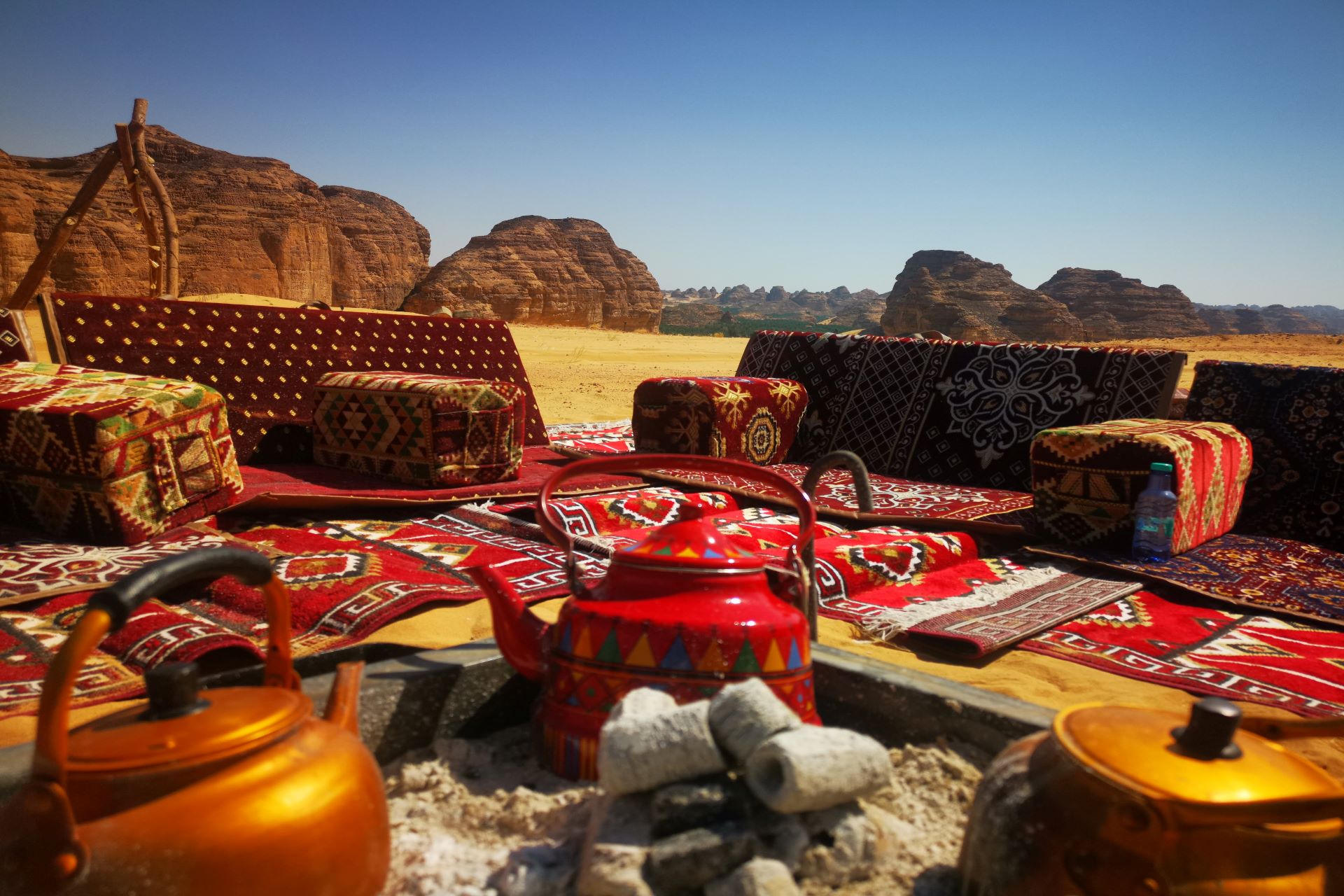 After breakfast we visit AlUla, the birthplace of two ancient Arabian kingdoms. During the 1st millennium BC, AlUla saw the rise of the ancient city of Dadan that became the capital of two successive kingdoms, Dadan and Lihyan, that ruled over the northwest of the Arabian Peninsula.
After breakfast we visit AlUla, the birthplace of two ancient Arabian kingdoms. During the 1st millennium BC, AlUla saw the rise of the ancient city of Dadan that became the capital of two successive kingdoms, Dadan and Lihyan, that ruled over the northwest of the Arabian Peninsula.
Visit the Lion Tombs of Dadan, the proud iconic figures of the ancient kingdoms of Dadan. These kingdoms developed their own culture including a specific language and alphabet, that resulted in a mix of Arabian traditions and strong influences from the surrounding empires.
In their capital Dedan some remains of these brilliant kingdoms have been excavated, including an impressive necropolis whose tombs were dug into the side of Jebel Dadan that overlooks the city on the east.
These tombs are square-shaped holes, cut at different heights out of the side of the mountain, their cavities being about two meters deep.
They are approximately dated to the 5th century BCE, the probable period of the Lihyanite takeover of the region.
A small fort still stands in the middle of the Heritage Village of AlUla and is known as Musa Ibn Nusayr Fort. It was probably a fortified structure as early as the Dadanite or Lihyanite times as some Dadanitic inscriptions were carved on the rock where the fort was built.
AlUla Heritage Village (ghost town), also known as Ad-Deerah, is the traditional Arabian village where people of the oasis moved some 8 centuries ago and inhabited until the 20th century. It was built on a higher part of the valley in order to be clear from the floods that can occur during the raining season. At its maximum expansion the town contained over 1,000 houses that were built adjacent to one another thereby forming a wall around the town to defend the population.
Arabia's only 'elephant' is a huge red rock three stories in height. The enormous 'body' connects to a slimmer 'trunk' that bulges in just the right areas to resemble the profile of a giant elephant, minus the tusks. This uncanny likeness sits in a desert surrounded by other magnificent red rocks, equally distorted by a millennium of exposure.
The hidden canyons of Hegra, Jibal Al-Rukkab. If the monumental tombs of Hegra are the must-see destination in the northwest of Saudi Arabia, then the surrounding area is also worth a trip. What is probably the best example of a hidden marvel lays just a couple of kilometers northeast of the ancient Nabatean city and is a sandstone massif crossed by numerous deep and steep canyons where erosion has sculpted incredible shapes.
The most impressive rock formations of Jibal Al-Rukkab are three incredibly tall natural pillars that stand in the middle of a wide wadi and at the bottom of huge sand bank that offers a perfect viewpoint on the out-this-world scenery. The silhouette of these rocks is so striking that locals gave them the nickname "the three dancers".
Overnight in Hegra camp.
-
Day 9
Hegra – Buraydah
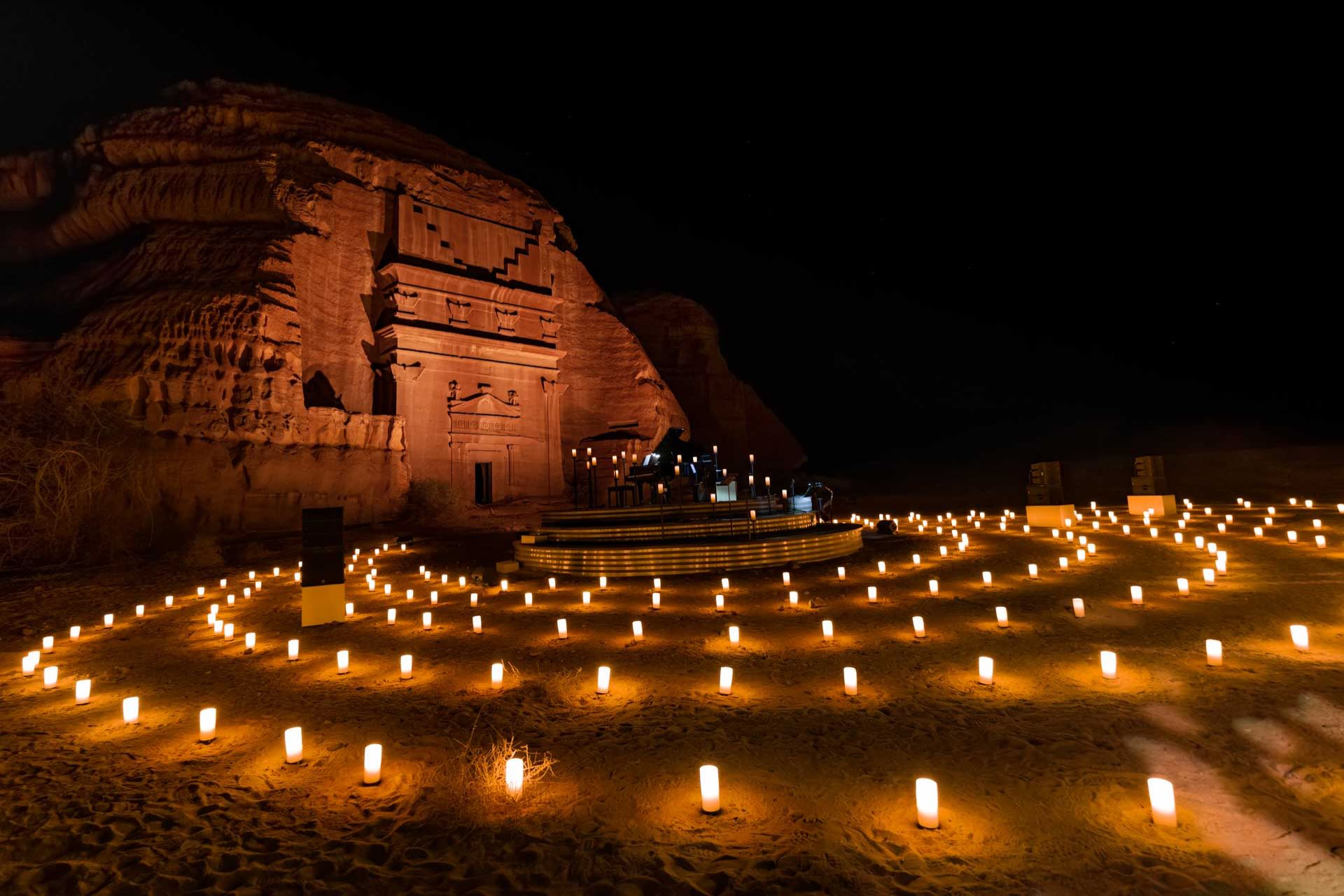 Hegra is the most iconic historical site of the Kingdom of Saudi Arabia and the first to be listed as a UNESCO Word Heritage, back in 2008. The Nabateans, called it Hijra (as it appears in some ancient inscriptions at the site), and the Romans used to call it Hegra.
Hegra is the most iconic historical site of the Kingdom of Saudi Arabia and the first to be listed as a UNESCO Word Heritage, back in 2008. The Nabateans, called it Hijra (as it appears in some ancient inscriptions at the site), and the Romans used to call it Hegra.
The Nabatean Kingdom;
The Nabatean people were Arab merchants actively involved in the frankincense trade originating from ancient Yemen from which they gained their great wealth. The Nabatean Kingdom developed from the 2nd century BC.
The extensive settlement of the site took place during the 1st century AD, when it came under the rule of the Nabatean king Aretas IV Philopatris (Al-Harith IV) (9 – 40 BC), who made Hegra the kingdom's first capital, before Petra, located 500 kilometers to the north.
In the early 19th century BC the Ottomans built a railway station at Hegra that was along the Hejaz Railway linking Damascus to the holy city.
Drive to Buraydah 70 Km north of Hegra where we arrive to Qarameil Valley, a huge open landscape full with solo standing stone pillars, which believed it is the remaining of big mountains over thousands of years where erosion has sculpted incredible shapes. Each pillar has been given a nick name over years by local tribes due to their imagination such as “Al Nawaha” The lamentation, “Al Ashegah” The Lover, “Al Yatemah” The orphan, “Al Bakiyah” The Crying and “Al Thaklah” The Bereaved …
Back to Hegra for overnight.
-
Day 10
Disah Valley – Al Shaq - Bajdah
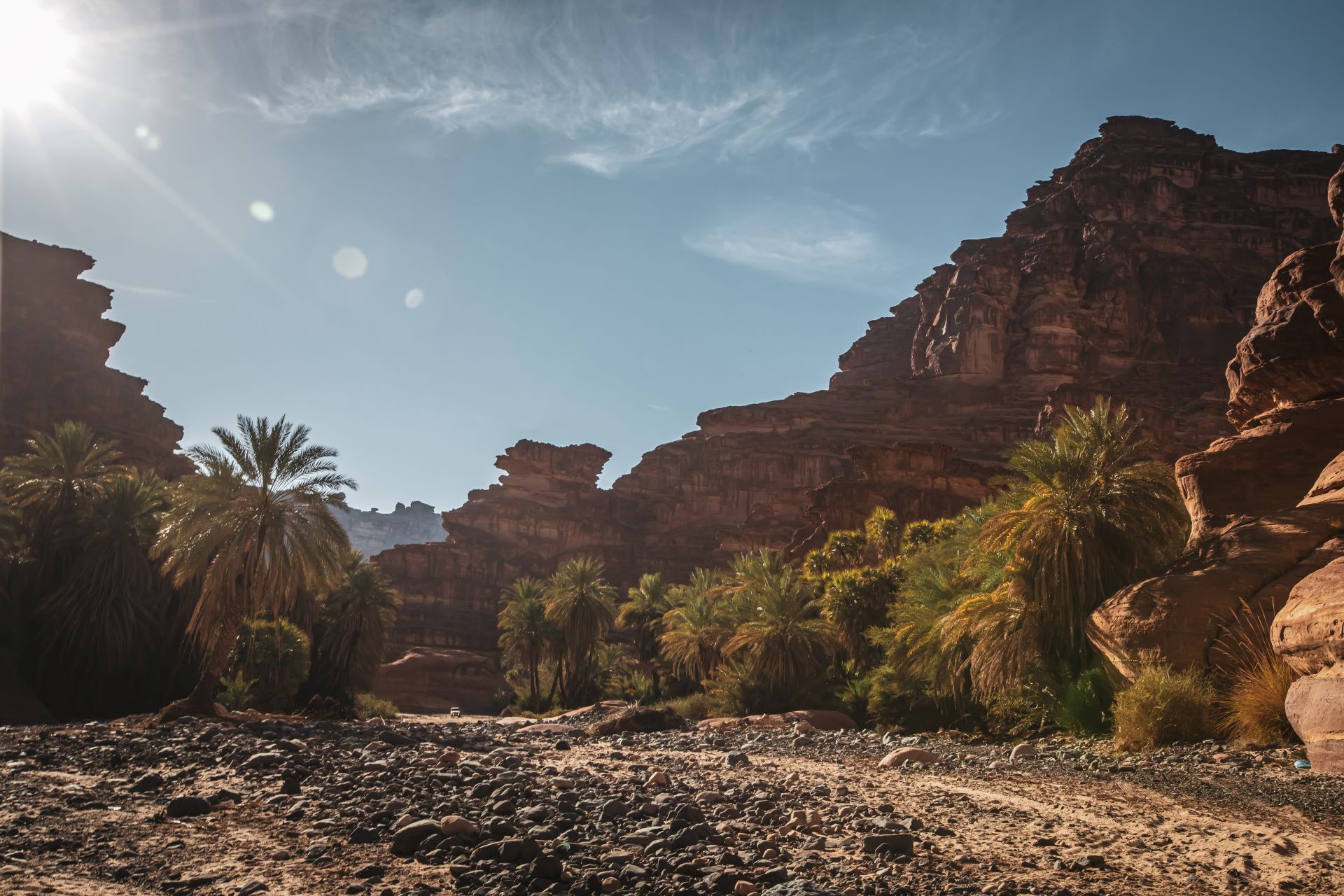 The natural jewel of Saudi Arabia, Wadi Qaraqir - also known as Wadi Disah - is a 15-Km-long canyon running through the Jebel Qaraqir, a heaven palm oasis with crystal clear running water. This natural wonder was for a long time a well-kept secret among explorers, before the road leading to the nearby city of Disah was built and satellite images were available to the public, which made it quite difficult to find and reach. Today, this natural wonder has become one of the must-see places in Saudi Arabia.
The natural jewel of Saudi Arabia, Wadi Qaraqir - also known as Wadi Disah - is a 15-Km-long canyon running through the Jebel Qaraqir, a heaven palm oasis with crystal clear running water. This natural wonder was for a long time a well-kept secret among explorers, before the road leading to the nearby city of Disah was built and satellite images were available to the public, which made it quite difficult to find and reach. Today, this natural wonder has become one of the must-see places in Saudi Arabia.
Among all there is a more discreet but fascinating place, Al-Shaq. This name means the tear (or rip) which makes sense as here the earth has been literally torn apart by tectonic forces. That is the reason why this place is also known as the Great Canyon of Saudi Arabia.
On the way a large stone circles appear on the ground that are probably another example of the numerous Bronze Age (3rd millennium BC) tombs of the Arabian Peninsula. But once past those tombs, what was just a shallow dry valley on the south becomes a crack in the ground that keeps on spreading until becoming a wide and impressively deep canyon. It is actually possible to be at the exact place where the breach appears and stand with feet on both sides of it. A track allows relatively easy access to the northern part of the canyon where the impressive scale of Al-Shaq is revealed. An overhang offers a perfect perspective for a souvenir picture but be careful not to get too close as rocks may fall some 300 meters lower!
Overnight in Bajdah camp.
-
Day 11
Bajdah – Jabal Al Lawz
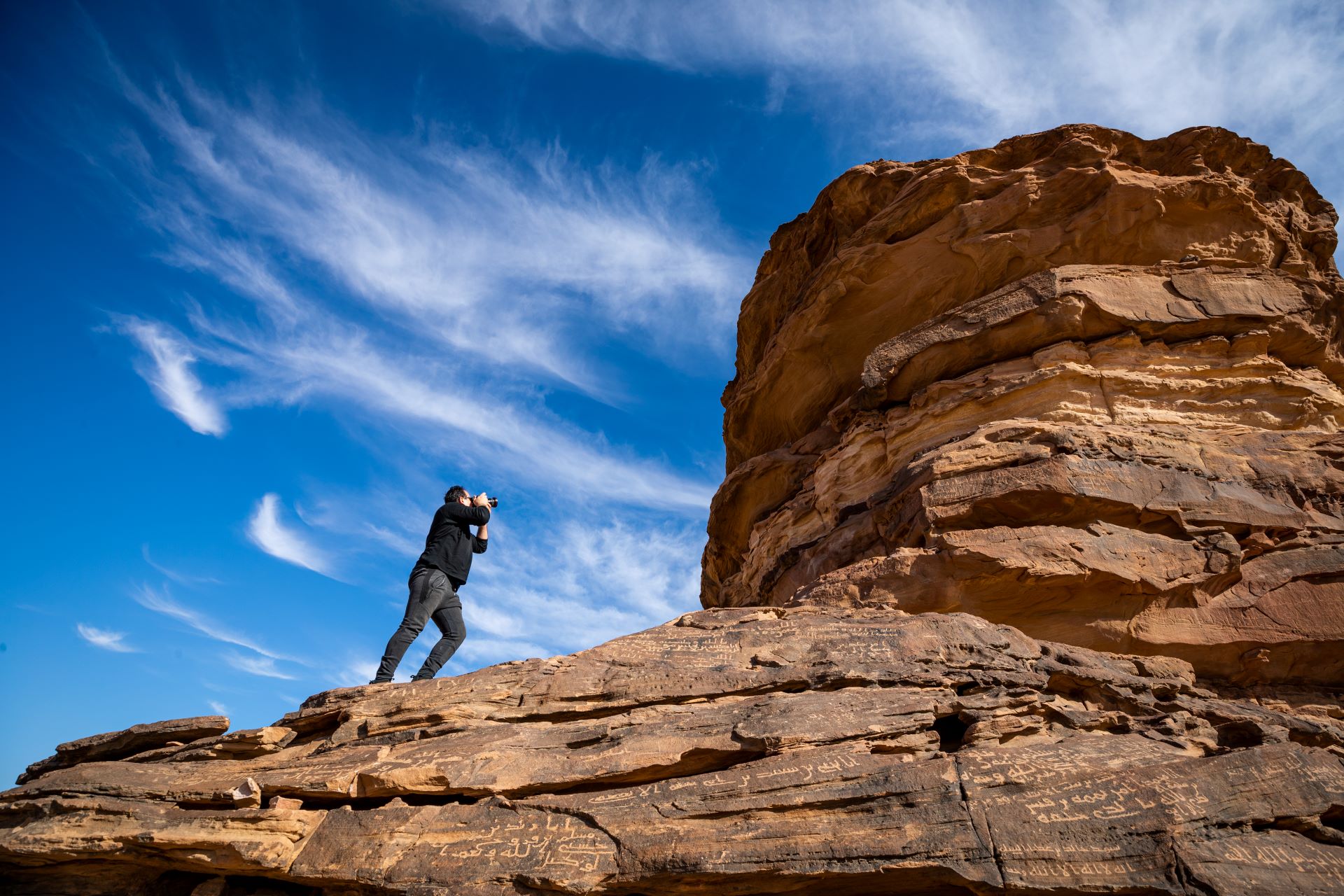 Jordan is famous for its Wadi Rum desert, but it is less known that its iconic sandstone formations spread across the border with Saudi Arabia as far as 200 Km to the south until the grandiose Wadi Qaraqir. The main part of Jibal Hisma is located between the majestic Jebel Al-Lawz on the west and the plain surrounding the city of Tabuk on the east. The name "Jibal" which means "ensemble of mountains" designates the fact that Hisma is not about one mountain but thousands of rocky formations spreading over hundreds of kilometers, each one of unique size, shape and out-of-this-world landscapes.
Jordan is famous for its Wadi Rum desert, but it is less known that its iconic sandstone formations spread across the border with Saudi Arabia as far as 200 Km to the south until the grandiose Wadi Qaraqir. The main part of Jibal Hisma is located between the majestic Jebel Al-Lawz on the west and the plain surrounding the city of Tabuk on the east. The name "Jibal" which means "ensemble of mountains" designates the fact that Hisma is not about one mountain but thousands of rocky formations spreading over hundreds of kilometers, each one of unique size, shape and out-of-this-world landscapes.
Jibal Hisma is home of ancient rock art and thousands of Kufic Arabic, Thamudic and Nabatian inscriptions.
Today we drive off road via the most spectacular land scape about 40 Km to Jabal Al-Lawz, whose name means the almond mountain in Arabic, is one of the most mythical mountains of the Kingdom of Saudi Arabia. Most people think that Saudi Arabia is just a vast extent of sand dunes but with its summit at 2 549 meters above sea level Jebel Al-Lawz is the highest mountain of Tabuk Province. and is probably the only place in Saudi Arabia where snow falls nearly every year. As surprising as it sounds Saudi Arabia does have regular snowfalls thanks to its many mountains above 2 500 meters. But as the Jebel Al-Lawz is the highest mountain in the north of the country and it is located beyond the northern tip of the Red Sea and its warm waters, this mountain is more exposed to low temperatures and sees snows more often than any other area of Saudi Arabia.
Jebel Al-Lawz is in the ancient land of Madyan where the Prophet Moses lived for ten years with his father-in-law the Prophet Shuayb (Jethro) and where he brought his people that fled Egypt. Some consider Jebel Al-Lawz to be the real Mount Sinai where Moses had a mythical experience with God, as mentioned in the Holy Quran.
-
Day 12
Ras Al Sheikh Hameed – Magna – Tayib Ism – Medyan- Haqil
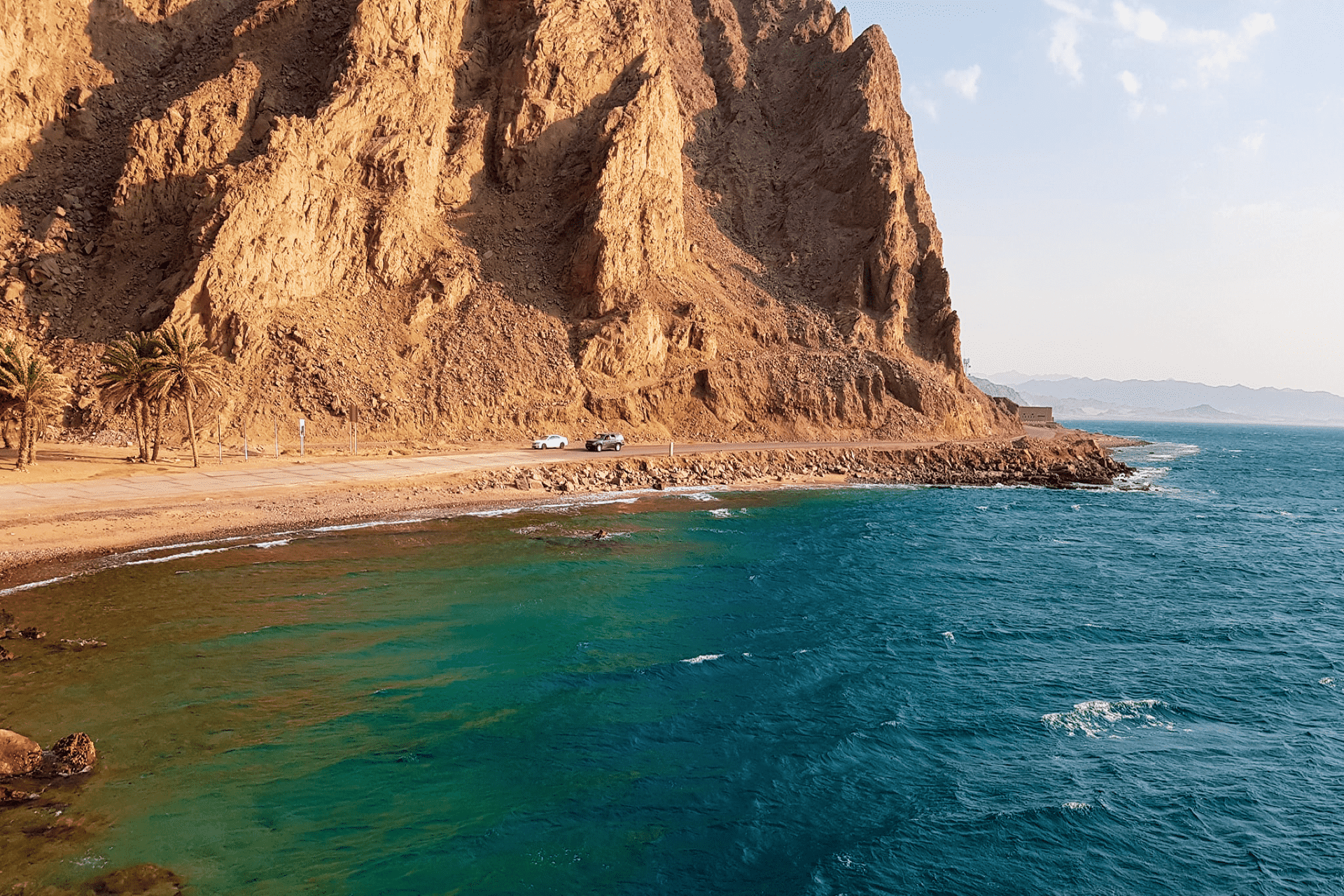 The western tip of Mainland Saudi, Ras Al-Sheikh Hameed is a beautiful sandy cape located in Tabuk Province, at the junction between the Red Sea and the Gulf of Aqaba. The sand banks of the Ras Al-Sheikh Hameed used to be the westernmost point of the Kingdom of Saudi Arabia until the cession of Tiran Islands by Egypt to Saudi Arabia in 2017. Thus, it is today only the westernmost point of the Saudi Arabian mainland.
The western tip of Mainland Saudi, Ras Al-Sheikh Hameed is a beautiful sandy cape located in Tabuk Province, at the junction between the Red Sea and the Gulf of Aqaba. The sand banks of the Ras Al-Sheikh Hameed used to be the westernmost point of the Kingdom of Saudi Arabia until the cession of Tiran Islands by Egypt to Saudi Arabia in 2017. Thus, it is today only the westernmost point of the Saudi Arabian mainland.
Maqna (The wells of Moses) is a charming coastal town located on the Gulf of Aqaba that faces Egypt and the Sinai mountains, clearly visible from it. But the town is famous for its wells that witnessed an important episode in the life of the Prophet Moses.
Tayeb Ism (The valley of Moses) is one of the magical natural wonders of Saudi Arabia that takes visitors by surprise. This incredible natural feature of Tabuk Province is located on the Gulf of Aqaba, just 15 Km north of the coastal town of Maqna.
Dated back to the end of the 2nd millennium BCE, Medyan is known for being the place where the Prophet Moses sought refuge after fleeing from Egypt. There he met the Prophet Jethro who recognized in Moses a pure soul and gave him one of his daughters. Moses then lived for ten years with his wife and father-in-law in Medyan before returning to Egypt to free its people from the Pharaoh Ramses II.
Continue to Haqil for departure.
Activities
- Adventure
- Off Road
- Exploring
- Jeep
Select Day
Includes
- All transfer and transportation with A/C bus or car.
- All nights’ accommodation B/B at selected category hotel.
- English speaking tour leader/driver.
- All entrance fees in Saudi as listed in itinerary.
- All Taxes.
Excludes
- Visa cost to Saudi.
- All Lunches.
- All Dinners.
- Drinks during meals.
- Domestic Flight.
- Tips.
- Any personal expenses.
- Anything not mentioned in the Include items.


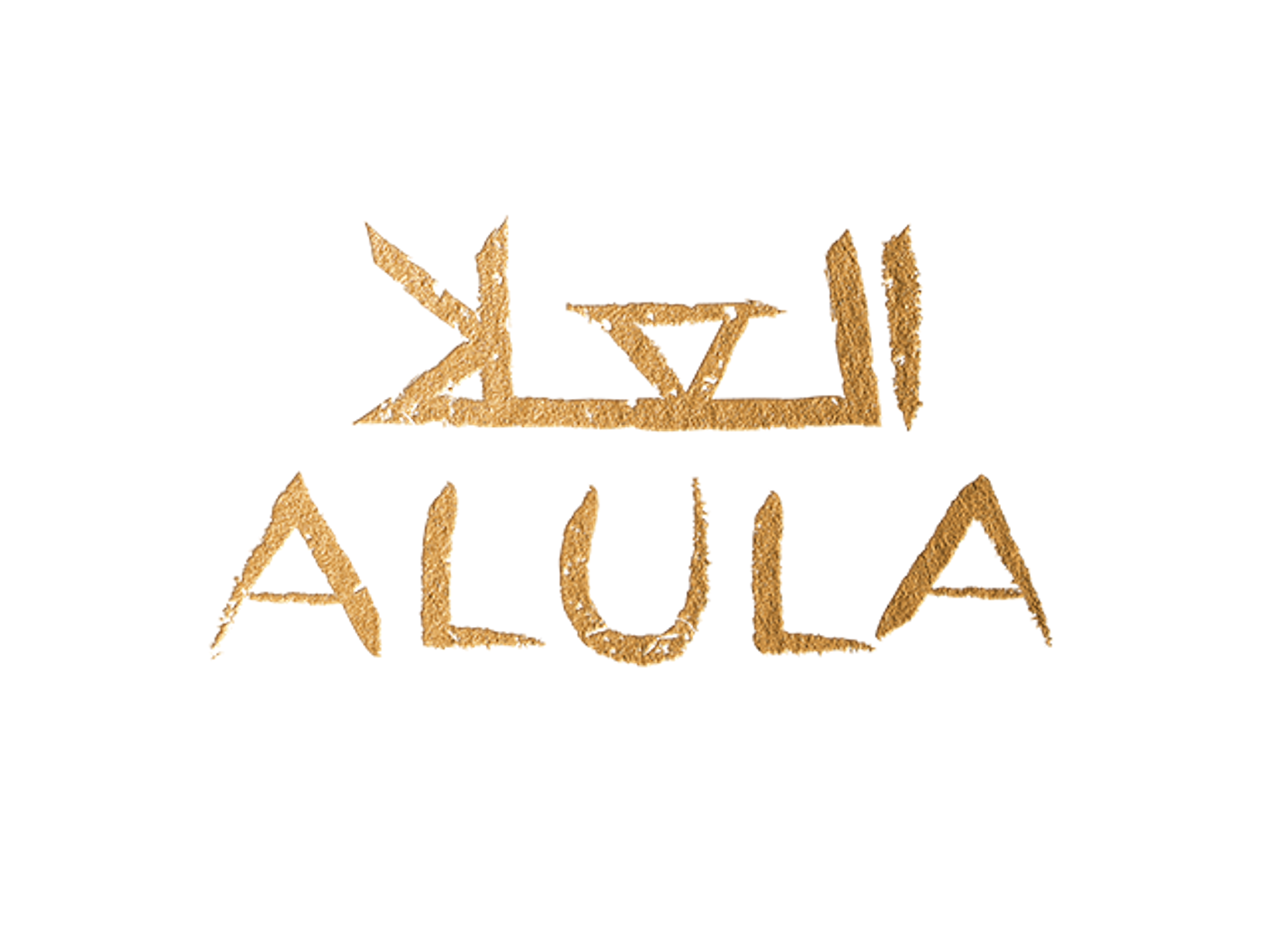
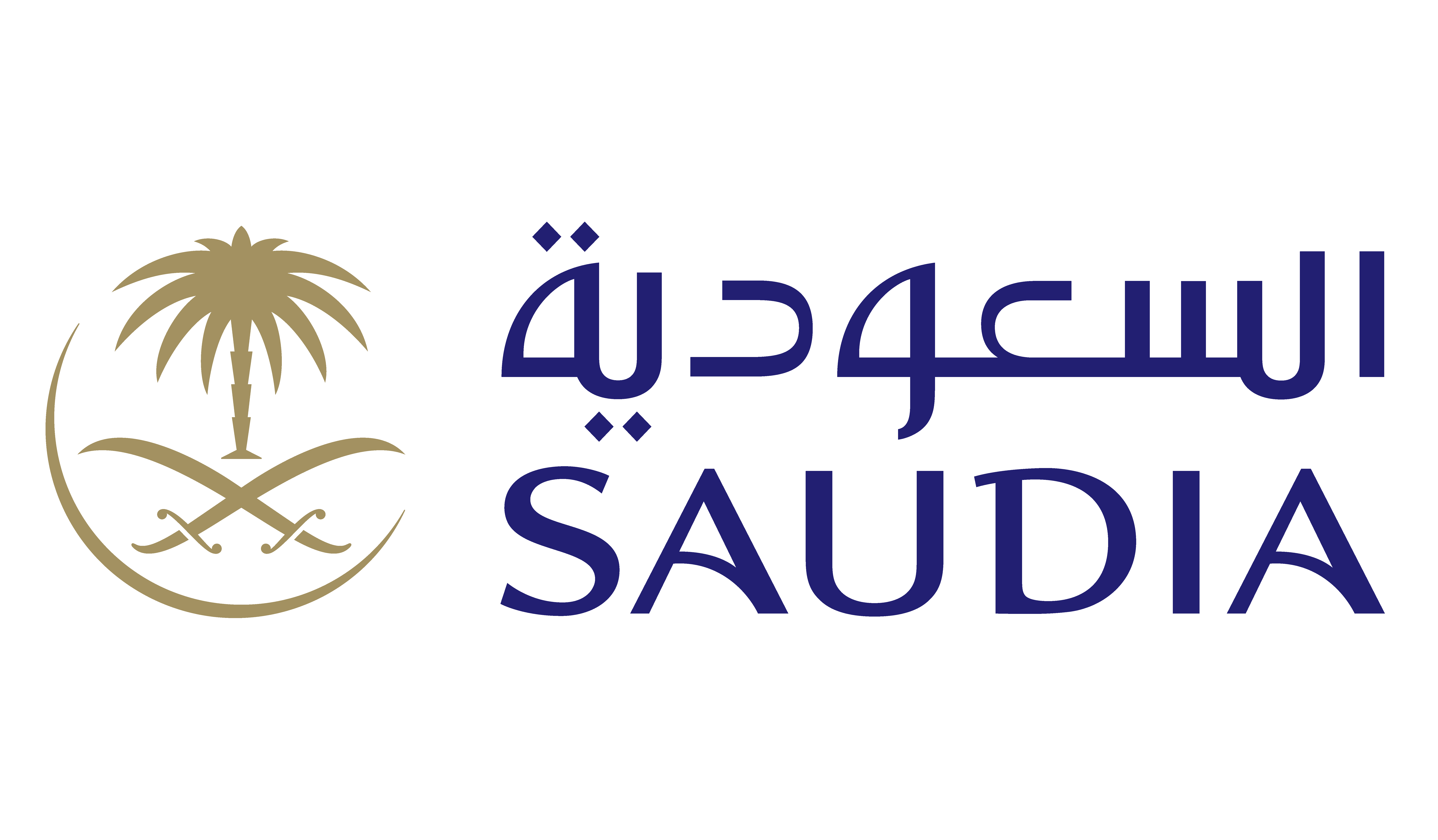


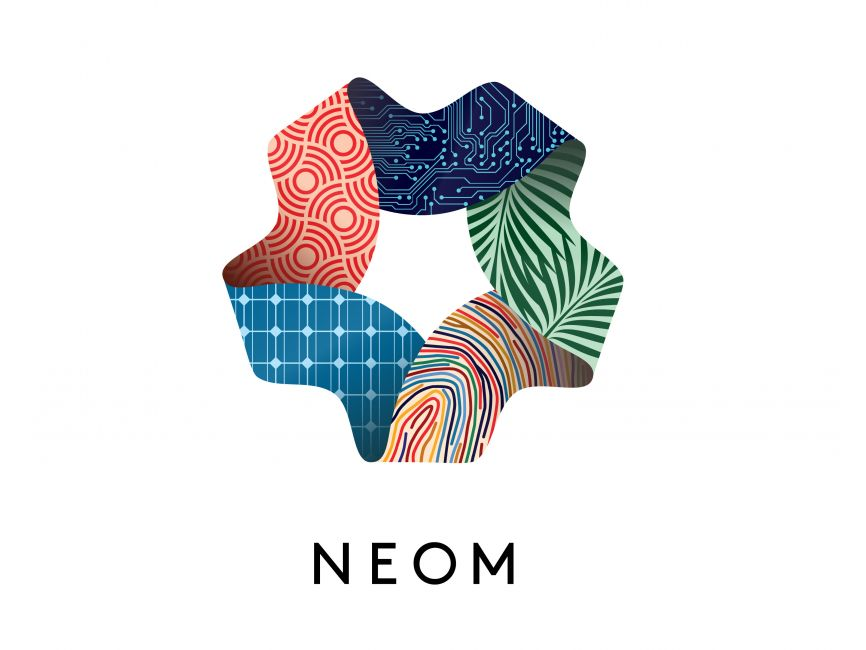
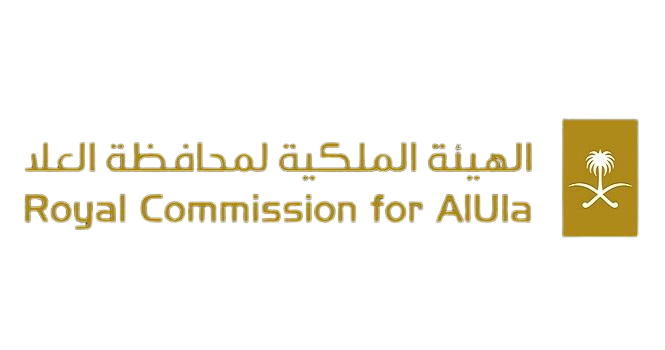
1021517daeb271a3064bfde286be5f0e12e417.jpg)

9573769fae268a382f75cde81f59603e9b35d.png)

